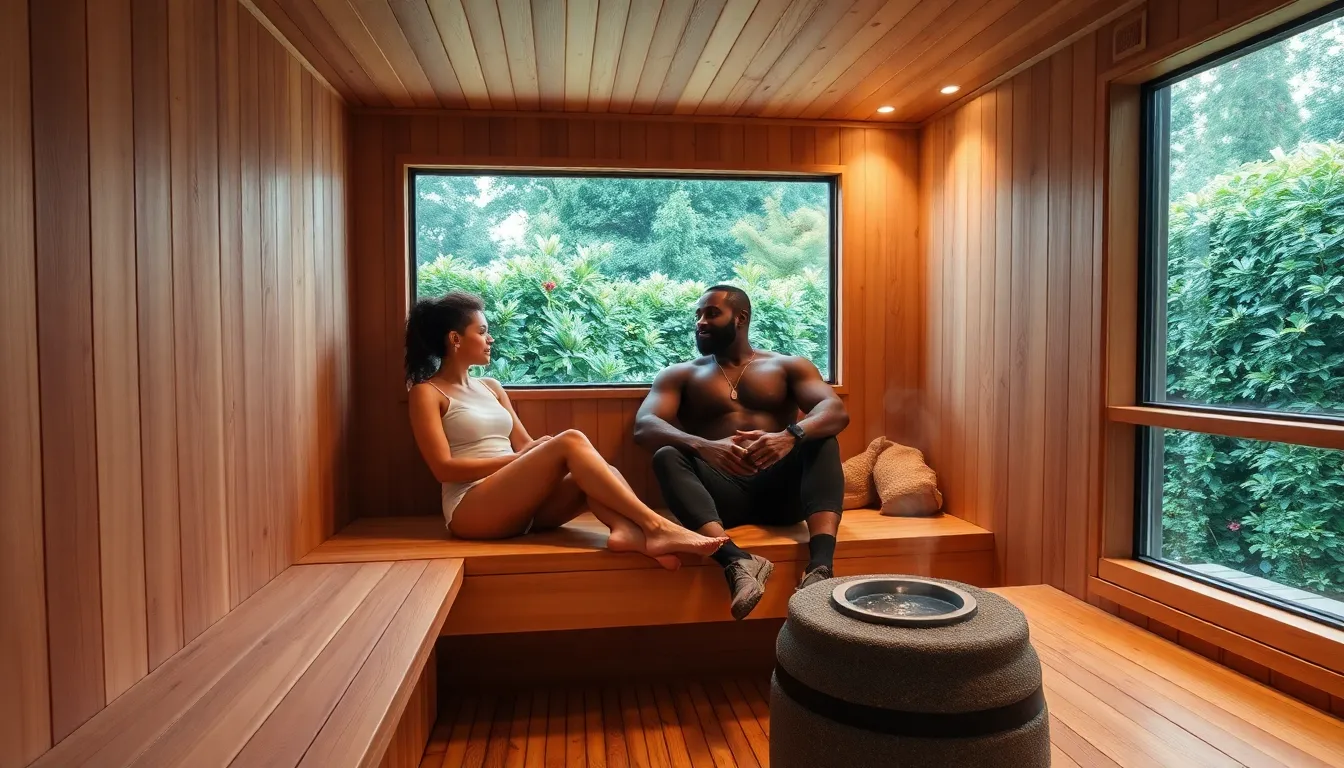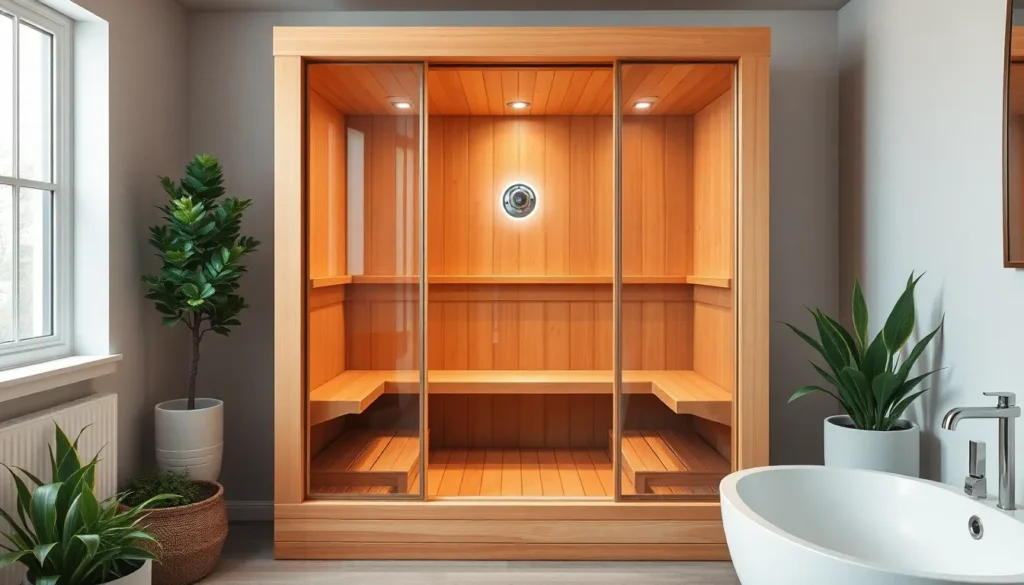Table of Contents
ToggleHave you ever thought about how incredible it would be to step into your very own sauna after a long day? Imagine the soothing heat embracing you, the stress melting away, sounds dreamy, right? Well, it’s time to turn that dream into reality. Building a sauna at home might sound like an intimidating project, but it’s surprisingly feasible with just a bit of planning and know-how. Plus, who wouldn’t want to enjoy those spa-like vibes from the comfort of their own space? Let’s jump into the details so you can enjoy the best of relaxation at home.
Benefits Of Having A Home Sauna

Having a sauna at home offers a treasure trove of benefits. First and foremost, saunas are renowned for their stress-relieving properties. After a hectic day, a few minutes in a sauna can restore a sense of calm. But that’s just the tip of the iceberg.
Health Benefits
Regular sauna use can boost circulation, enhance skin health, and even boost immune function. Heat therapy is known for relieving muscle soreness, easing joint pain, and promoting relaxation. Plus, there’s research suggesting that frequent sauna use can lead to longevity, as it might reduce risks associated with cardiovascular diseases.
Convenience
Having your very own sauna means no waiting in line, no membership fees, and no excuses to skip that relaxation session. You can jump in whenever you like, even during a Netflix binge or after an intense workout.
Social Aspect
It can also double as a social spot. Imagine inviting friends over for a sauna party, good company, refreshing beverages, and that warm, inviting atmosphere. What’s not to love?
In essence, a home sauna is an investment in health, relaxation, and overall well-being.
Types Of Home Saunas
When it comes to home saunas, there’s no one-size-fits-all. Here’s a brief overview of the most popular types you might consider:
Traditional Sauna
A traditional sauna uses heated rocks and may require a wood-burning stove or electric heater. These saunas typically achieve higher humidity levels, offering a unique experience of warmth.
Infrared Sauna
Infrared saunas operate a bit differently. They use infrared panels to convert light into heat, which directly warms the body without warming the air around you. They’re often touted for more comfortable sessions and quicker setup.
Steam Room
If you prefer a steam room experience, you can create one at home too. With steam, the humidity is higher, leading to a very different, often refreshing, type of heat. They’re great for respiratory health and skin moisture.
Portable Saunas
For those short on space or budget, portable saunas are a great option. These are often smaller and easier to assemble. You can set them up in your living room or backyard, making relaxation mobile.
Planning Your Home Sauna
Before you start building, a bit of planning is essential. Here’s what to consider:
Location
Where will the sauna live? A backyard shed, garage, or even a spare bathroom are popular choices. Make sure there’s adequate ventilation and drainage nearby.
Size
Think about how many people you want to accommodate. Will it be a personal retreat, or do you envision hosting friends? Generally, a sauna should allow each user about 2-3 square feet.
Electrical Requirements
If you’re opting for an electric sauna, check electrical requirements in your area. Hiring a professional might be necessary to ensure safety and compliance with building codes.
Budget
Setting a budget is crucial. Costs can range widely depending on materials, design, and size. Always account for the unforeseen expenses, because life has a way of throwing curveballs.
Materials And Tools Required
Building a sauna requires specific materials and tools to ensure efficiency and safety. Here’s a quick shopping list:
Materials
- Wood: Cedar or hemlock are popular for their resistance to moisture and pleasant aromas.
- Insulation: Reflective insulation materials like foil-faced foam board help retain heat.
- Heater: Choose between a traditional electric stove or an infrared heater based on your sauna type.
- Vapor Barrier: Essential for moisture control, materials like plastic sheeting work well.
Tools
- Saws: A circular saw and a hand saw will be necessary for cutting wood.
- Drill: For securing materials together.
- Measuring Tape: Precision is key.
- Level: Ensuring the floor and structures are level is crucial for safety.
Step-By-Step Guide To Building Your Sauna
Ready to jump into the construction phase? Follow these steps for a successful sauna build:
1. Prepare the Space
Clear out your selected area and make sure all utilities are accessible.
2. Build the Frame
Construct the basic frame using your selected wood. Ensure stability by making sure your walls are square and secured.
3. Insulate
Add insulation between your studs and cover it with a vapor barrier to prevent moisture damage.
4. Install Heating Units
Depending on your type of sauna, either install the heater according to the manufacturer’s instructions or set up your infrared panels.
5. Lay the Benches
Build benches at varying heights, this will allow everyone to choose their preferred level of heat. Use safe, heat-resistant materials.
6. Finishing Touches
Attach wooden paneling and ensure the doors are properly hung. Finish with any additional features you desire such as lighting or sound systems.
7. Test Run
Before jumping in, do a test run of the heater to ensure everything’s working. Adjust the temperature according to your preferences.
Safety Considerations And Maintenance Tips
You’ve built yourself a sauna, now it’s important to keep it safe and functional. Here are tips to consider:
Safety Tips
- Ventilation: Ensure adequate airflow to prevent overheating.
- Temperature Rules: Don’t exceed safe temperature levels (generally around 160-190°F).
- Hydration: Always stay hydrated before, during, and after using the sauna.
Maintenance**
- Regular Checks: Inspect your sauna for leaks or damage periodically.
- Cleanliness: Maintain cleanliness to avoid mold. Use natural cleaners.
- Wood Treatment: Treat wooden surfaces with appropriate oils to ensure longevity.




